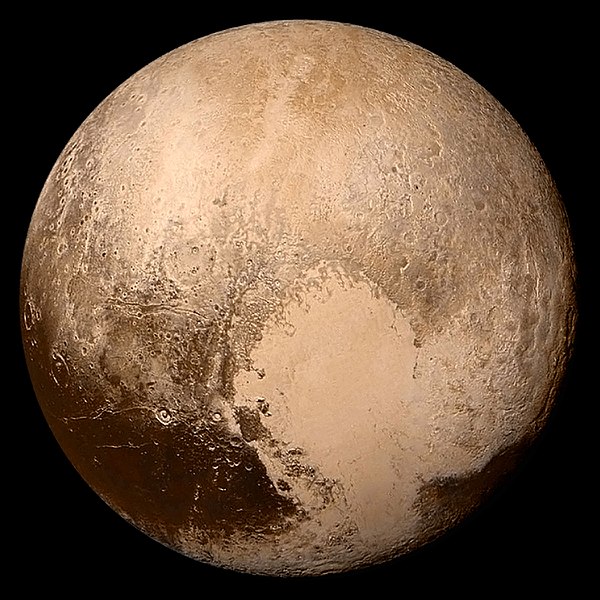Pluto Facts
Planet Profile
| Type | Dwarf planet |
| Age | 4.5 billion years |
| Length of Year | 248 Earth year |
| Satellites | 5 |
| Radius | 738.4 mi |
| Mass | 1.309 × 1022 kg |
| Volume | 7.057 × 109 km3 |
| Orbit Speed | 4.67 km/s |
| Dist. from Sun | 5.9 billio km, ave |
Below are some of the facts about Pluto:
- Pluto was recently founded in 1930, and initially it was called a planet, and a total of 9 planets of the solar system were accounted for including Pluto. But then Pluto has been classified in 2006 as a dwarf planet. And now it s counted as the largest dwarf, and the second massive dwarf planet after Eris.
- Ever since its discovery, Pluto has completed only one third of its journey along its orbit around the sun.
- Pluto has five natural satellites. They are Charon, Hydra, Nix, Kerberos, and Styx. The last two were discovered in 2011 and 2012 respectively.
- Pluto has a diameter of 2372 km.
- One third of Pluto is water which is in solid ice form, and the total water content of Pluto is more than thrice the water content of Earth. The rest of Pluto is all rocks.
- The surface of Pluto is full of craters and mountain ranges, all covered in ice.
- Pluto is so small that a number of moons in the solar system are larger than it. Callisto, Titan, Ganymeade, Earth’s moon and Triton are the moons larger than Pluto.
- While at a part of its orbit it gets closer to the sun than Neptune for some time due to its highly eccentric orbit. When it is closest to the sun it is at a distance of 4.4 billion km, and when it is farthest it is at 7.3 billion km.
- Pluto’s pictures have been taken by the New Horizons spacecraft in 2015.
- The nitrogen eventually gets lost in space. When Pluto is closest to the sun while rotating, some of its ice melts due to the sun’s heat, and some Nitrogen gas rises above the surface to form a thin atmosphere. Also some methane rise above the surface to form a haze at around 161 km from the surface. These methane gases reacts with sunlight and break down into hydrocarbons, which fall back to the planet’s surface and coats the surface ice with a dark color.s
- The surface temperature of Pluto is close to -229 degrees C.
- Pluto takes 248 years to complete a full rotation along its orbit, which means 248 Earth years is equal to pone Pluto year.
- Pluto is just 2% to 3% larger than the dwarf planet Eris.
- Scientists now believe there may be bigger planets existing far beyond the orbit of Pluto in the solar system.
- Charon, the largest moon of Pluto is quite big compared to Pluto, and has almost one eighth the mass of it.
